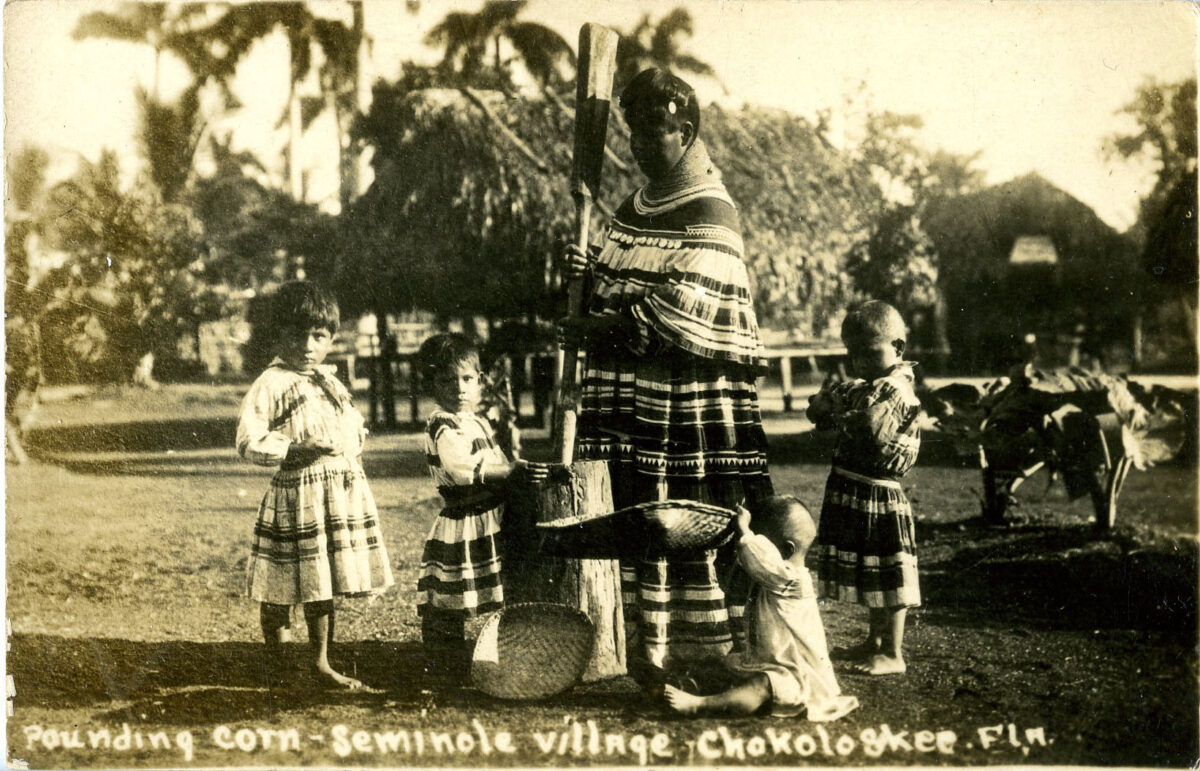
The Everglades by Land and Water
How many ways can you explore the Florida Everglades? This unique ecosystem offers numerous opportunities for you to get your feet wet – or not! This week, join us for a guide on exploring this incredible ecosystem by land or water. Get ready to paddle, float, and hike your way through the stunning Florida Everglades.

Nine Mile Pond by Canoe, Everglades National Park, 2017
The Everglades Ecosystem
The Everglades ecosystem encompasses nine distinct habitats that support a variety of plant and animal species. The landscape is dynamic and ever changing, depending on the flow of water. What makes the Everglades special is the unique sheet flow that supports these habitats. Before human intervention, water from Lake Okeechobee would spill unheeded southward during wet season and feed the Everglades. This water would replenish the area with vital nutrients and minerals. This slow-moving river was termed the River of Grass by Marjory Stoneman Douglas in 1947, a moniker that persists today. Although the relationship has been strained by human progress, water is still the beating heart of the Everglades. In the wet season, heavy rainfall and inclement weather swell the Everglades water levels. As water levels rise, high points in the elevation (tree islands or hammocks) are revealed, and provide shelter for plants and animals.
Hardwood hammocks are the highest elevation points in the Everglades, and remain dry through even the wettest parts of the wet season. They have a diverse assemblage of plants, including species like mahogany, red maple, live oak, and gumbo limbo. Pine rocklands, dominated by slash pine, develop over limestone substrate. In pinelands, fires help keep this habitat healthy. Deep marshy channels of moving water, called sloughs, wind through the Everglades, and act as the main waterflow.
Bordering the deeper sloughs, freshwater marl prairies feature diverse varieties of low-growing vegetation. Here, thin layers of soil form over limestone bedrock. Cypress forests grow in standing water. In the coastal waterways, mangrove forests thrive in the harsh growing conditions found where the freshwater of the Everglades blends with the salty ocean water. To the south, coastal lowlands butt up against marine habitats, and feature shrubby, salt-tolerant plants that are often buffeted by tropical storms and hurricanes.
Kayaking and Canoeing
In the not-so-distant past, Seminoles made and utilized dugout canoes to navigate their way through the seemingly endless water of the Everglades. These cypress canoes represent an important Seminole making tradition. They were a vital form of transportation, and Seminoles had an extensive knowledge of these shifting Everglades waterways. Prior to major development in the early 1900s, Seminoles used canoes to paddle and pole all over South Florida unheeded. But soon, the introduction of drainage projects, the railroad, and the construction of the Tamiami Trail would spell the end of the water highway.
Although you can no longer canoe or kayak from one end of the Everglades to the other, boating like this is still a fantastic way to see the beauty of this unique ecosystem. In Everglades National Park, there are a variety of canoe trails. Kayak and canoe rentals are available. For those less confident in their paddling skills, guided canoe tours are available by reservation at Nine Mile Pond. Earlier in this post, you can see an image taken during a guided tour at Nine Mile Pond in 2017.
Big Cypress National Preserve also contains numerous canoe and kayaking trail opportunities of various lengths. Along these routes, you can see a wide variety of the Everglades habitats, from cypress strands, sawgrass prairies, intertidal mangroves to coastal mangrove forests, and coastal bays. Outside of these major parks, canoe and kayak opportunities are plentiful around the Ten Thousand Islands, and many Florida State Parks.
Airboats
Airboats are a unique and exhilarating way to explore the waterways of the Everglades for people of all abilities. Although the higher water levels of the summertime open more possibilities for airboat trails, airboat tours run year round. Airboats became popular in South Florida in the 1930s and 40s. Seminoles developed their own airboats as a simple, fast way to skim over low water and hunt frogs (West 191). At the time, frog meat was a lucrative trade.
Now, airboats persist as a unique tourist opportunity. Due to their design, airboat captains can pilot them in relatively shallow water compared to traditional boats. This makes them ideal for use in the Everglades. Airboat rides are a great way to see a variety of wildlife, like birds, alligators, turtles, and snakes. There are numerous opportunities to take an airboat ride along Tamiami Trail, many of which are operated by Seminole, such as Corey Billie’s, and Miccosukee Tribal members.
Bicycling
Due to the low elevation changes, bicycling through the Everglades and surrounding areas is appropriate for people of a variety of abilities and ages. From just a few mile-long loops, to 20+ mile routes, there are bicycling opportunities for everyone! In Everglades National Park, there is a wonderful family-friendly bike experience that is sure to please even the youngest and most antsy travelers. The Shark Valley Tram Trail is a 15-mile paved loop, with an observation tower halfway. Wildlife is abundant on the trail, and you may see herons, egrets, alligators, turtles, deer, and maybe even snail kites. Below, you can see a view from the Shark Valley Tower, about 8 miles into the loop. You may notice an alligator sunning itself in the bottom left corner. This image was taken in January 2023, and on this trip we counted over 60 alligators on our journey.

The Shark Valley Tram Trail is just one of the many biking paths in the Everglades. Bicycling opportunities abound at the surrounding state parks, nature preserves, and public lands. While Everglades National Park offers bike rentals for the Shark Valley Tram Trail, most other places will require you to bring your own. To the north, the Lake Okeechobee Scenic Trail (LOST) overlays the Florida Trail. Mostly on top of the 35-ft high Herbert Hoover Dike, this trail rings Lake Okeechobee. It offers an unmatched view high atop the dike and is 109-miles long.
Swamp Walks and Hiking
If you are open to getting a little wet but you don’t feel like hopping in a boat, a swamp walk is the way to go! In Everglades National Park, a ranger-led Slough Slog is offered through a cypress dome. Advanced reservations are required, and participants need to be 12 years or older. In Big Cypress National Preserve, several private tour companies also offer guided swamp walks. There are also a variety of marked trails, and visitors can also acquire backcountry permits and hike outside of the designated trails.
Outside of guided opportunities, there are several marked trails that visitors can also explore and experience within the national and state parks systems. Swamp walks are a fun and unique way to connect to the Everglades, as you are tromping through the shallow water that supports and feeds the vast array of wildlife that make the Everglades special. Nearby, Fakahatchee Strand State Park boasts a 2,000-foot-long boardwalk through old-growth cypress.
Even though the elevation is relatively flat, there are ample hiking places to immerse yourself in the beauty of the Everglades while staying relatively dry. When hiking, keep an eye out for wildlife as you move through these different and unique habitats. Often, you will be able to see a variety of birds, alligators, snakes, turtles, marsh rabbits, fish, and even deer.
There are endless opportunities to explore the Everglades from land and water. The Everglades ecosystem is unique, and each exciting experience offers a different view into this special place. From paddling along in a canoe, to hiking through a cypress dome, you will not regret getting outside your comfort zone to immerse yourself in the beauty of the Everglades. How are you going to explore?
Additional Sources
The author accessed these sources digitally. Page reference numbers may not align with paper and hardback copies.
West, Patsy. The Enduring Seminoles: From Alligator Wresting to Casino Gaming, Revised and Expanded Edition. 2008. University Press of Florida. Digital.
Author Bio
Originally from Washington state, Deanna Butler received her BA in Archaeological Sciences from the University of Washington in 2014. Deanna moved to South Florida in 2016. Soon, she began working for the Seminole Tribe of Florida’s Tribal Historic Preservation Office. Deanna was the THPO’s Archaeological Collections Assistant from 2017-2021. While at the THPO, Deanna worked to preserve, support, and process the Tribe’s archaeological collection. She often wrote the popular Artifact of the Month series, and worked on many community and educational outreach programs. She lives in Fort Myers, FL with her husband, son, and dog.



